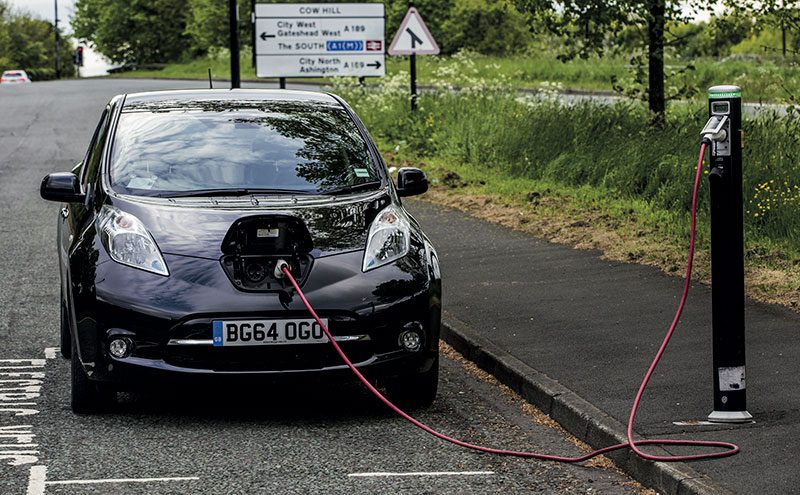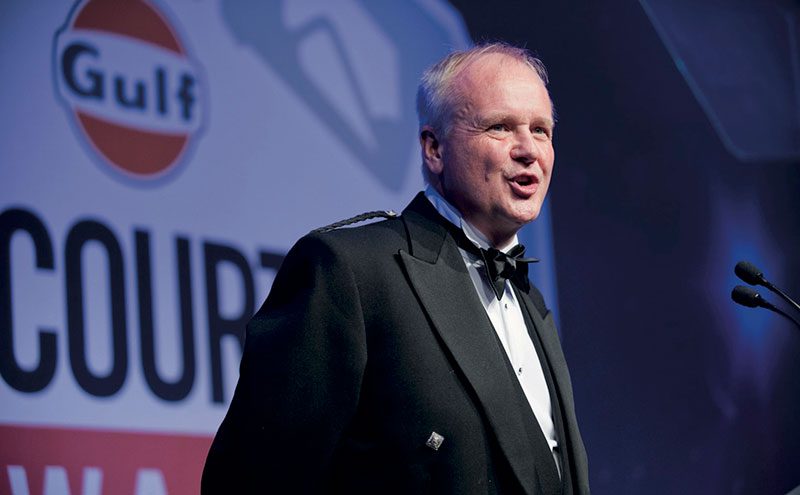Certas Energy’s Ramsay MacDonald looks ahead to electric possibilities on the horizon

THE death knell is not quite ringing yet, but for forecourt retailers, the long-term prospects of petrol and diesel appear to have been slashed by eight years as the Scottish Government looks to shift gears on environmental policy during the 2017/18 parliament.
Following on from UK Government environment secratary Michael Gove’s announcement this summer that sales of new petrol and diesel vehicles will cease from 2040, First Minister Nicola Sturgeon announced that the Scottish Government plans to bring this date forward to 2032 north of the border.
The First Minister revealed the policy as part of the Scottish Government’s legislative agenda for 2017/18, with the 2032 date marking the end point of the SNPs new long-term Climate Change Plan.
As part of that climate change agenda, the Scottish Government is also expected to set out detailed plans to “massively expand” the number of electric charging points in rural, urban and domestic settings, as well as turning the A9 into Scotland’s first fully electric-enabled highway.
Plans are also expected to appear for an acceleration in the procurement of electric or ultra-low-emission vehicles in the public sector, as well as pilot demonstrator projects to encourage uptake of electric vehicles amongst private motorists, all of which points to the real possibility of a serious uptick in demand for electric charge-points at Scotland’s forecourts.
There’s no question the shift in fuel consumption will come with some cost to retailers, but the transition to near full electric that looks increasingly likely over the next 15 to 20 years could also be viewed as a big opportunity for the forecourt businesses that get it right.
Ramsay MacDonald, retail director at Certas Energy, reckons that the writing is on the wall for petrol and diesel power, and he pointed to recent statements from the major car manufacturers as evidence of the fossil fuel pump’s coming end.

“The demise of the combustion engine, signalled by recent announcements from almost all of the major car manufacturers, means in no uncertain terms that electric is the fuel front runner for the next generation of passenger cars,” he said.
“This creates a complex set of challenges but also exciting opportunities, both for the fuel suppliers such as Certas Energy and the UK’s forecourt retailers.
“Other fuels will have their place, particularly with regards to HGV traffic going forward, but the car manufacturers seem to have made up their mind that electric, either hybrid or exclusively, is the fuel they are backing for passenger cars.”
There may be plenty of challenges ahead, but MacDonald was positive about the prospects for forecourt retailers.
“I have no doubt that forecourt retailers will make the most of the electric revolution, continue to find their niche and develop ways of engaging with consumers,” he said.
“After all, we are a resilient and innovative bunch who have survived and prospered through hyperinflation, fuel shortages, supermarket dominance, business rate hikes and anything else that has been thrown our way.”
MacDonald may be bullish about the possibility of a prosperous electric future for forecourt retailers, but he said he also recognises the scale of the challenge that’s coming in the years ahead.
Collectively we need to see this as a new fuel for the industry and take the bull by the horns.
“With the speed of technological change and environmental concerns over particle pollution, electricity may not be the end-game but there are no doubts that this is the most serious challenge the industry has faced.
“The infrastructure to provide electric charging to hybrid or electric vehicles is significantly different.
“Collectively we need to see this as a new fuel for the industry and take the bull by the horns.”
As things stand, if a driver needs to fill up on petrol or diesel there’s only really one place they can stop – and that’s the forecourt.
However, this is unlikely to be the case when the electric car revolution gets into full swing, with non-forecourt charging points already in place at sites across the country.
To ensure forecourts continue to be the go-to place for fuel in the future, MacDonald reckons the industry must work to improve provisions of electric charge points.
“Currently, the biggest bugbear for drivers of electric cars is that they have to over-plan their journeys due to the short mileage range and the limited availability of rapid charge points.
“The forecourt industry can eliminate this mind set through availability and accessibility. Let forecourts continue to be the obvious and preferred top up destination for all road going vehicles, whatever their energy needs,” he said.
[box style=”4″]
Powering forward
PLUG-in electric vehicles are motor vehicles that can be charged from an external source of electricity. Figures published by the Society of Motor Manufacturers & Traders (SMMT) show there’s a long way to go. Governments are planning for a shift to electric cars, but has the public come round to this way of thinking? While new registrations of plug-in vehicles are still dwarfed by combustion engines, market share has increased almost tenfold since 2013.
- 2013 3,584 new registrations, 0.16% market share
- 2014 14,518 new registrations, 0.59% market share
- 2015 28,188 new registrations, 1.1% market share
- 2016 36,907 new registrations, 1.37% market share
[/box]














